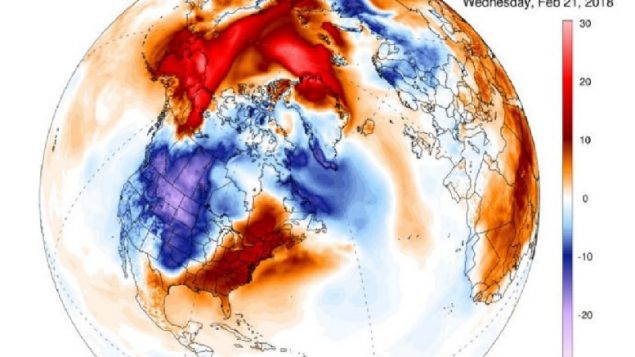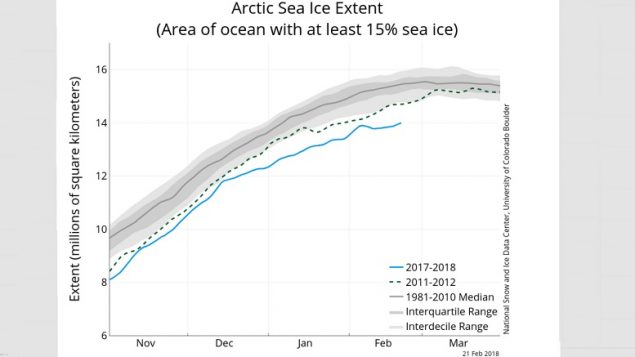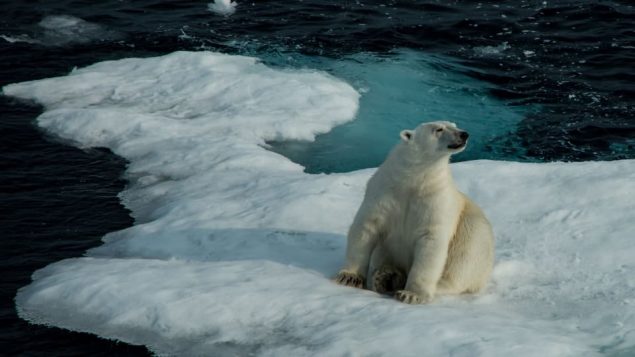The most northerly weather station in the world is at Cape Morris Jesup off the north coast of Greenland.
Normally at this time of year temperatures would be in the -24 to -30 range. Instead they’re hovering around zero and above, about 25 degrees above normal even though it’s the middle of winter, and the “dark” season when the sun is almost not seen.

Exceptional warming in the Arctic. The image shows the temperature difference from normal on Wednesday (Feb 21/18) as recorded by the NCEP Global Forecast System. IMAGE: University of Maine climate reanalyzer
The Arctic has warmed more dramatically than any place on Earth. “While there is always large variability in the Arctic winter, the ‘persistence’ of the above-average temperatures is quite striking in the last few years,” said Zack Labe, an atmospheric scientist at the University of California, Irvine.
Alaska just experienced its warmest December in history with temperatures averaging 8 degrees Celsius above normal,
Across the entire Arctic above 80° latitude the temperatures have been several degrees above normal even as high as 14 degrees above the typical -30C range. Temperatures this week in some areas will actually be above freezing this week.
The January sea-ice cover was at its lowest extent ever, over 1,3 million sq/km below the January average, an area much bigger than France and Germany combined.

National Snow and Ice Data Centre
The U.S National Oceanic and Atmospheric Adminstration (NOAA ) says that since 1979, Arctic ice extent has been decreasing at an average 3.3 per cent per decade
Concerns are that the unusual warm spells in recent Arctic winters is melting permafrost when it should be in a deep freeze. As it melts it is releasing stored greenhouse gasses, CO2 and methane.
But it’s not just the Arctic. The U.S. National Snow and Ice Data Centre is reporting the second lowest ice extent on record for January.
additional information-sources







For reasons beyond our control, and for an undetermined period of time, our comment section is now closed. However, our social networks remain open to your contributions.